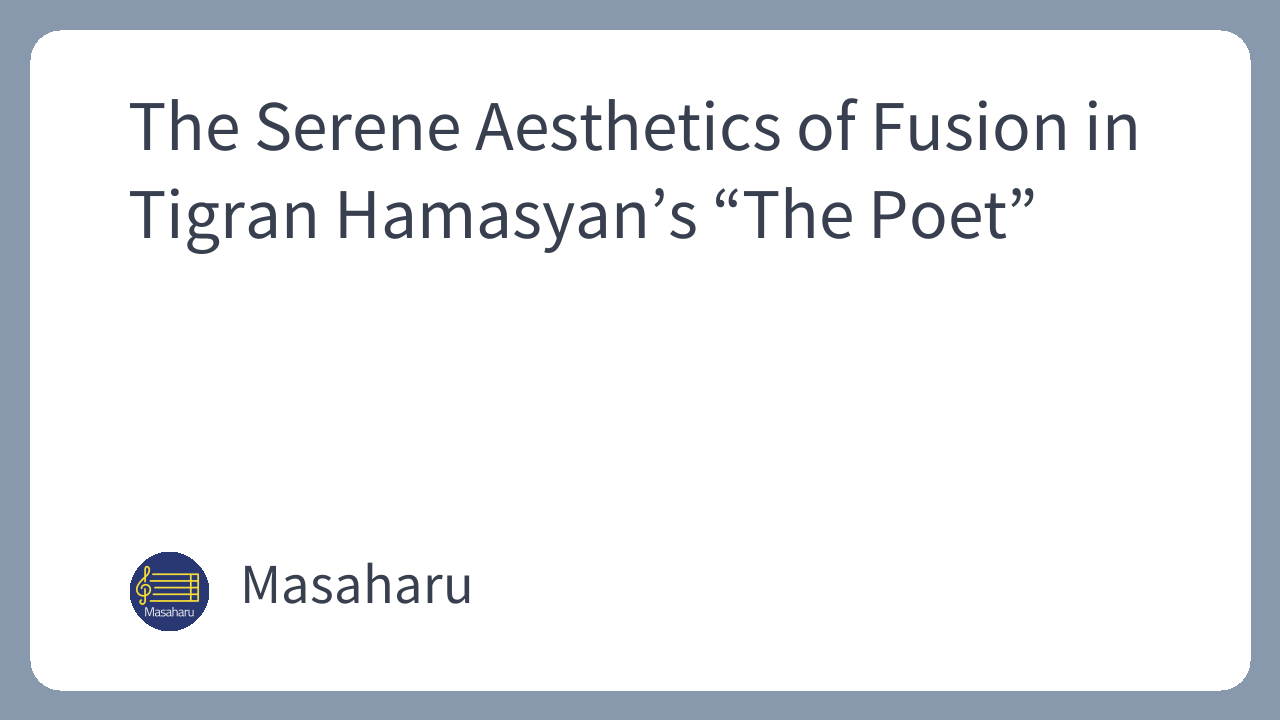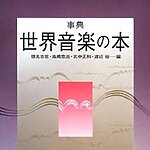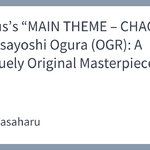In the music scene, the name Tigran Hamasyan is known as that of an innovator who creates a musical language that gracefully transcends genre boundaries. Armenian folk music, advanced jazz improvisation, the structural beauty of classical music, and the impulse of progressive rock—he sublimates these disparate elements into a single work of art with astonishing precision.
My first encounter with Hamasyan’s work was when I happened to hear “The Poet,” the opening track of his 2013 album “Shadow Theater,” on social media. I was immediately captivated by its musical world, where a melody strongly reminiscent of folk music is played over delicate yet confident harmonies.
In this article, I will focus on this impressive piece, “The Poet,” and discuss its musical appeal.
Tigran Hamasyan’s Musical Origins and Aesthetics of Fusion
First, let’s touch upon Hamasyan’s background and a glimpse of his musical philosophy.
The breadth of Hamasyan’s musical world can be said to be rooted in his diverse origins. While growing up listening to rock bands like Led Zeppelin and Black Sabbath under his father’s influence, he also received instruction in jazz from his uncle and was formally trained in classical music. This wide range of musical experiences arguably formed his flexible artistic foundation.
Particularly noteworthy is his encounter with his own roots, Armenian folk music, at the age of 14. This exploration was an intellectual and conscious process, inspired by Western jazz artists like Jan Garbarek and Keith Jarrett who incorporated elements of folk music. Since this encounter, Hamasyan has deeply studied Armenian traditional music, placing its melodies and rhythmic structures at the core of his own compositional language.
Hamasyan has said, “If you’re going to arrange a song that has been passed down for centuries, you have to treat it with due respect.” This philosophy is what distinguishes his musical fusion from mere superficial borrowing or the creation of exoticism. The Armenian elements in his music are not just embellishments; they function as an indispensable pillar that forms the structural and emotional foundation of the entire work.
A One-of-a-Kind Sonic World: Rhythm, Harmony, Structure
What sets Hamasyan apart from his contemporary pianists/composers is his unique “aesthetics of fusion,” so to speak, and his technical innovation.
Rhythmic Innovation
Hamasyan’s music deviates from the common 4/4 time signature, frequently employing odd meters such as 5/4, 9/8, and even 21-beat cycles. His rhythmic approach is often “riff-based,” closer in structure to a rock band than to the traditional swing feel of jazz.
In particular, his method of embodying the angular, polyrhythmic aggression seen in “Djent,” a subgenre of progressive metal, on the piano is a major characteristic of his, and it is also why his work is often described as “angular, Djent-style jazz.”
Harmonic and Melodic Characteristics
Hamasyan’s improvisations and compositions are richly woven with embellishments based on scales originating from Middle Eastern and Southwest Asian traditions. The interval leaps and melodic contours specific to Armenian folk music give his music a unique modal flavor and narrative quality.
Even within complex harmonic structures, it is believed that the goal of “delivering a beautiful melody” remains consistent, masterfully balancing intellectual stimulation with emotional appeal.
Characteristics and Charm of “The Poet”
“The Poet,” the opening track of the album “Shadow Theater,” is, if I may say so, a manifesto that encapsulates Hamasyan’s artistry.
This piece seems to strongly reflect the “narrative quality” that Hamasyan emphasizes. As the title suggests, a poetic and introspective atmosphere dominates the whole, inviting the listener into a world of serene contemplation. His characteristic complex rhythmic structures are used in a restrained manner in this song, which seems to result in highlighting the delicate dynamic changes and the intricate weave of textures.
The lonesome, honky-tonk-like timbre at the beginning symbolically represents the mood of this piece, where gentleness and a stark warmth coexist, instantly drawing you into Hamasyan’s world. Then, a melodic contour derived from Armenian music is spun by his own restrained vocals and piano, creating deep emotion.
The piece unfolds and progresses with a series of clear and solid chords, at times accompanied by a sentimentality that can feel almost suffocating. His outstanding technique and rich musical vocabulary are fully demonstrated, and every note is placed with meticulous care to tell the overall story of the piece.
Thus, “The Poet” not only captures the listener’s heart with its charm as a standalone piece but also serves as a “magnificent introduction to the album,” guiding them into Hamasyan’s profound musical world.
Throughout his career, Hamasyan has received numerous international awards and has been highly acclaimed by masters such as Herbie Hancock and Brad Mehldau. This can be said to be objective proof of the overwhelming originality and artistic perfection of his music.
I believe “The Poet” is a work that, while serene, is extremely powerful and backs up such accolades. It possesses the power to evoke universal emotional resonance that transcends its technical complexity, and I myself have experienced that power firsthand.
This piece, and the existence of the artist Tigran Hamasyan, may be one of the most compelling contemporary examples of how cultural fusion can break new artistic ground. At a point where genre boundaries become meaningless, his music resonates in the listener’s heart purely as a “story.”


